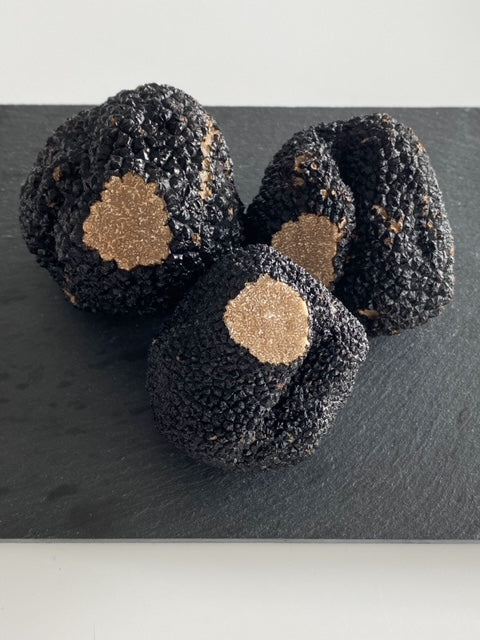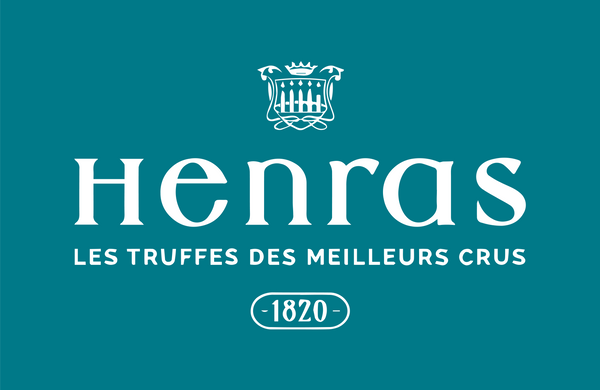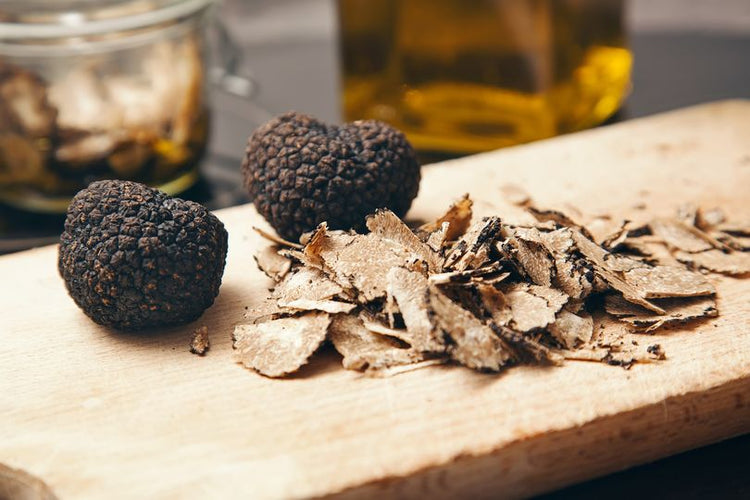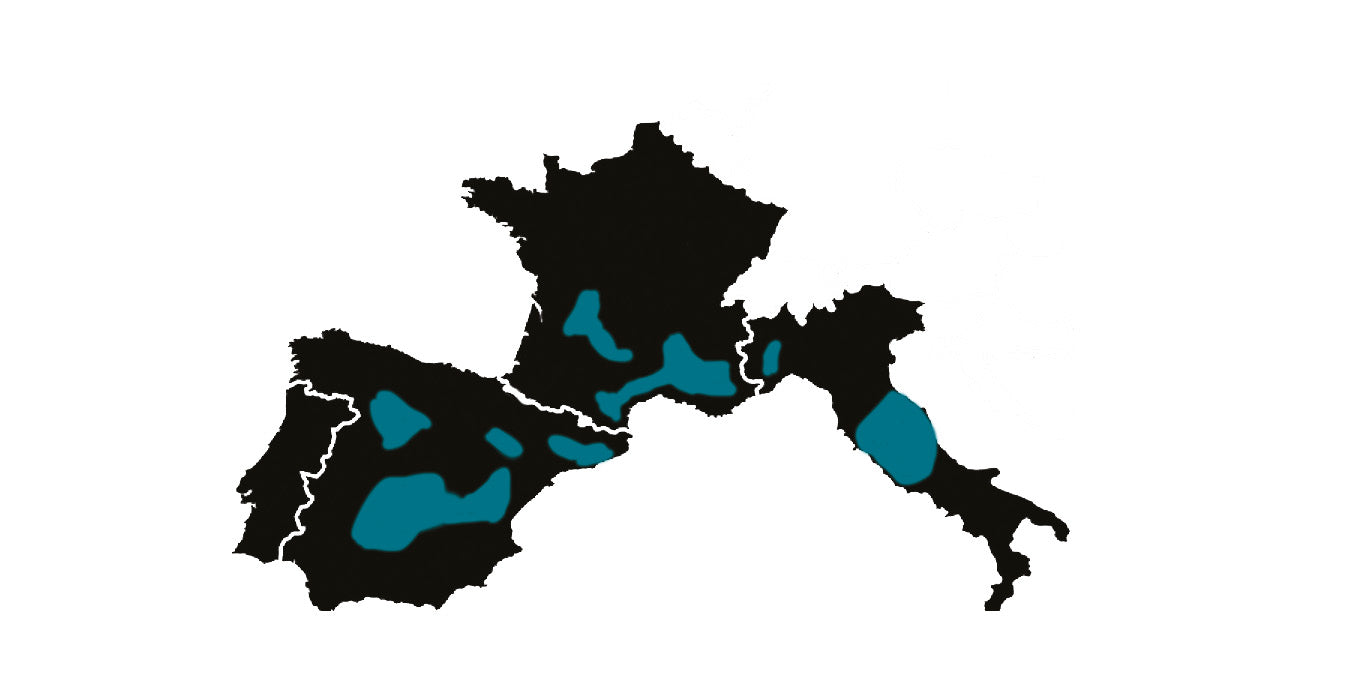-
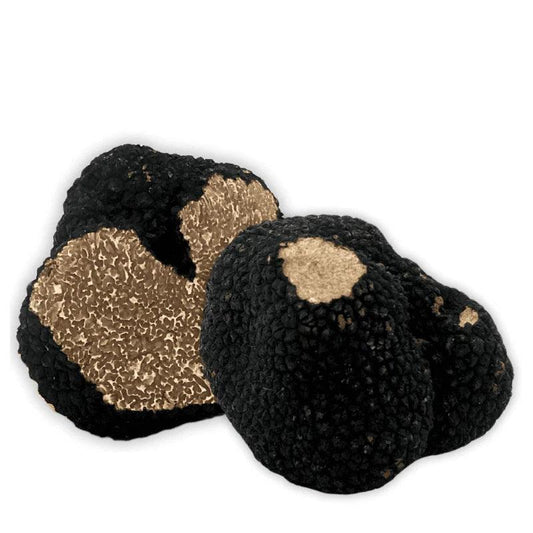
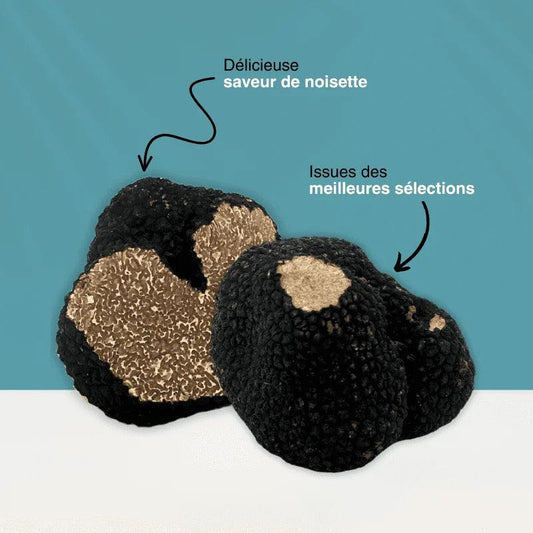 Sold out
Sold out
-
 SECURE PAYMENT
SECURE PAYMENTPay your order securely by credit card and Paypal
-
 FREE DELIVERY
FREE DELIVERYFrom 60€ of purchase, your delivery is free!
-
 CUSTOMER SERVICE
CUSTOMER SERVICEMonday to Friday from 9 a.m. to 5 p.m. on 05 31 60 02 11 (non-surcharged call)
-
 EXPRESS DELIVERY
EXPRESS DELIVERYVacuum-packed truffles + ice pack
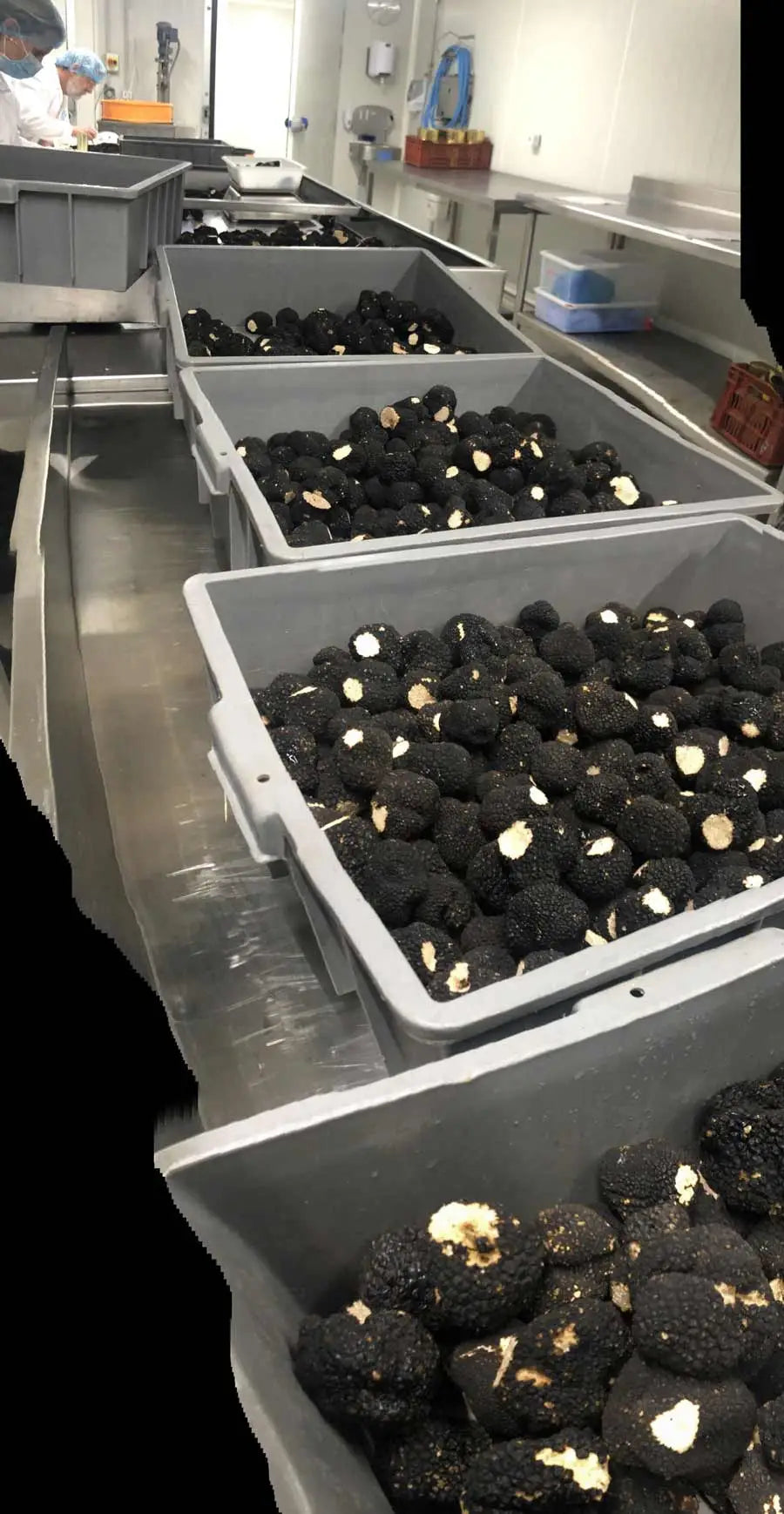
THE SUMMER TRUFFLE
A DELICATE TRUFFLE
The summer truffle is also frequently called the Saint Jean truffle. Indeed, on the feast day of Saint John (end of June) it is fully ripe.
The Summer Truffle, also called Maienco , Junenco or Aoustenque , is a unique and exceptional variety that was ignored for a long time. Until twenty years ago, this truffle was the delight of wild boars who could easily feast on it in the wild insofar as it attracted neither fine gourmets nor cooks. The peasants reserved the summer truffle even for the domestic pigs who loved it.
Today, the summer truffle is used by many restaurateurs and delights truffle lovers who long for the arrival of the first Tuber Melanosporum at the end of the year. They appreciate its delicate flavors and its crunch from the month of May. This common truffle is also appreciated in Provence for the training of truffle dogs. It is in this context that the success of the summer truffle began some forty years ago.
Why is it attracting so much interest? Those who defend it say that it is a beautiful product that should not be compared to the black truffle. The price of the summer truffle is five times lower than that of the Tuber Melanosporum. Tastefully, its taste is light and subtle.
THE TUBER AESTIVUM: CHARACTERISTICS
WHERE AND WHEN TO FIND THIS PARAGON OF SOFTNESS?
The summer truffle is frequently found in Europe. She feels good in France, Italy, Spain or even in the countries of the East.
This variety of truffle is present under the same species of trees and on the same types of soil as those where the beautiful black truffles grow, but during the summer period.
The summer truffle prefers soil rich in calcium and magnesium, grainy and full of small inclusions. For it to grow normally, the Tuber Aestivum needs water and humidity. However, if there is too much water, it dies, and if the humidity level at the soil surface drops too much, it does not grow either.
This fact explains why during years of drought, the summer truffle is not very present at the foot of the trees it particularly likes and among which are holm oaks, poplars, hazelnuts or lime trees, but also pubescent oak, beech, hornbeam, ash or pine.
The taste of the summer truffle is not influenced by the tree at the foot of which it grows. It is the soil and the environment in which it grows that matters. In particular, it can exhale, in some cases, earthy flavors which are due to the proximity of thyme or rosemary.
The summer truffle grows between April and June depending on the spring rains. Its fruiting takes place between the months of June and September. It is often harvested while still immature. Present on the surface, the summer truffle is very popular with insects and various animals that do not really give it time to mature.
Truffle growers prefer to harvest it early when the heat is on the horizon. Indeed, as it is flush with the surface of the soil, it risks drying out quickly.
These different constraints also explain why not all summer truffles have the same taste. The younger they are picked, the more subtle their flavor. Ripe, they assert themselves more and delight you with a more pronounced fragrance.
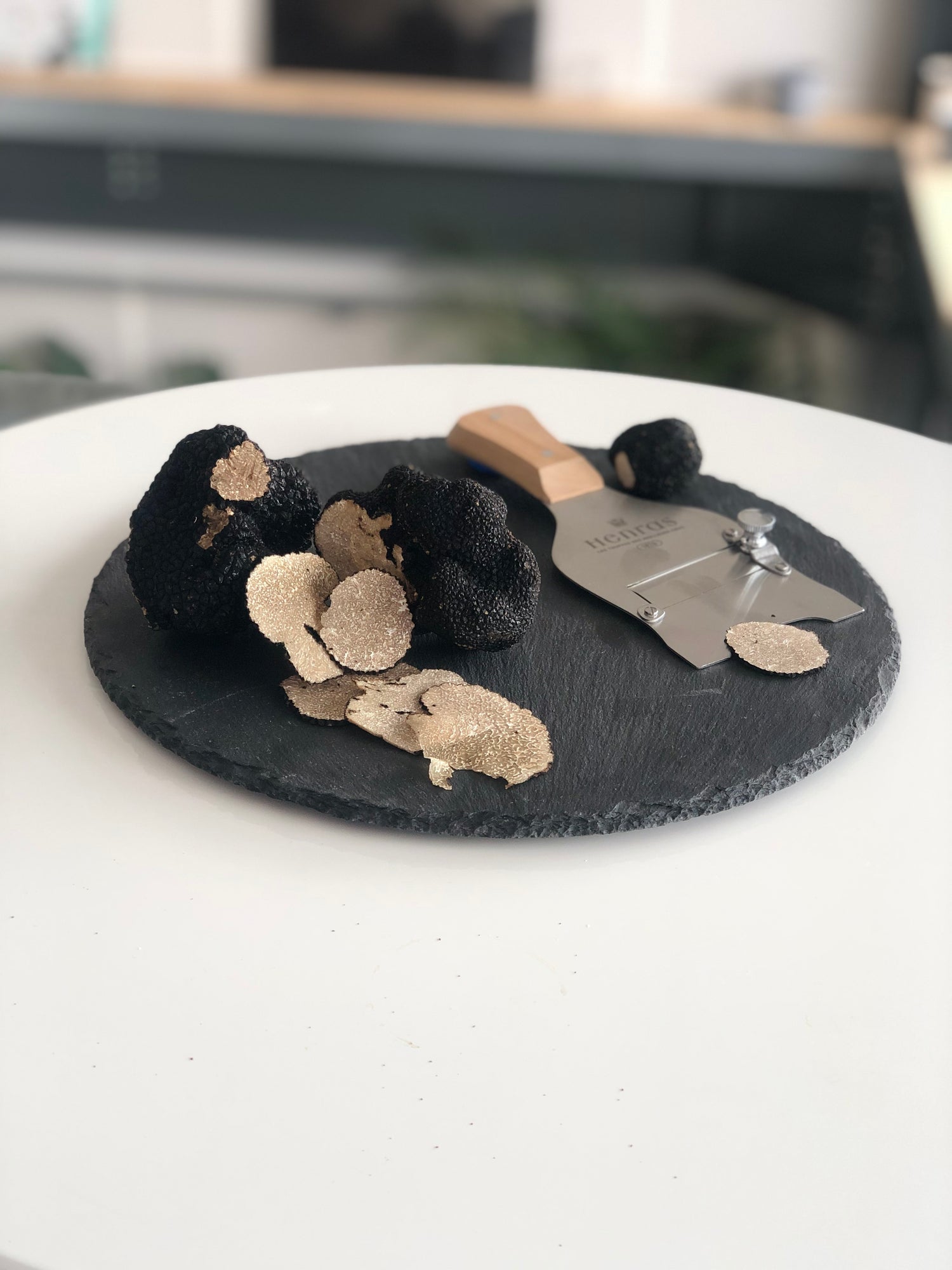
A TRUFFLE WITH A SINGULAR APPEARANCE AND TASTE
Truffles are distinguished from each other by their appearance. The size of the Tuber Aestivum rarely exceeds that of an egg, even if it can sometimes reach the size of a beautiful apple. The summer truffle has a typical, tuberous shape, which may recall that of kidneys. Its scales are particularly prominent and distinguish it with certainty from the white truffle, the Tuber Magnatum , originating in Italy, which remains smooth and is completely white.
The exterior of the Summer Truffle, the peridium, is a dark shade between brown and black. It is adorned with small pyramidal warts. These warts are prominent and somewhat ridged and bring this edible closer to one of its close relatives, the Burgundy truffle, otherwise known as the Tuber Uncinatum .
The gleba, the inside of the truffle, goes from beige to brown and can even be brown or sometimes gray. When the summer truffle reaches maturity, the ivory veins which streak it are more or less yellowish and present an anastomosed and branched appearance. Specialists confirm that if the inner flesh of the fruit is light or very white, it is not ripe.
It has a delicate smell of roe or hazelnut and when the summer truffle is very fresh, it gives off a pleasant scent of wild mushroom.
Some of her lovers report that she smells of mushrooms, cooked corn and hot, humid earth. For them, it remains one of the best edibles of the summer and finds its place easily in many dishes.
AN IDEAL TRUFFLE TO ENJOY YOUR CUTE SIN
The summer truffle requires much less diligent care than that given to the queen of truffles, the Tuber Melanosporum . It is for this reason and because it is possible to harvest up to 150 tons of summer truffles, in good years, and its price remains very reasonable.
Many events are actually organized in the markets of Sainte-Alvère, Sarlat, and even in Sorges, bastions of Périgord truffle cultivation, around this tasty summer truffle.
Summer truffles allow everyone, curious or amateurs, to discover this simple and less expensive treasure and to enjoy it without a second thought.
The white summer truffle is now on the rise with restaurateurs and sublimates many summer recipes. Much less expensive than the winter truffle, it is nonetheless a delicacy that is in very good taste to offer or to discover during a meal with family or friends.
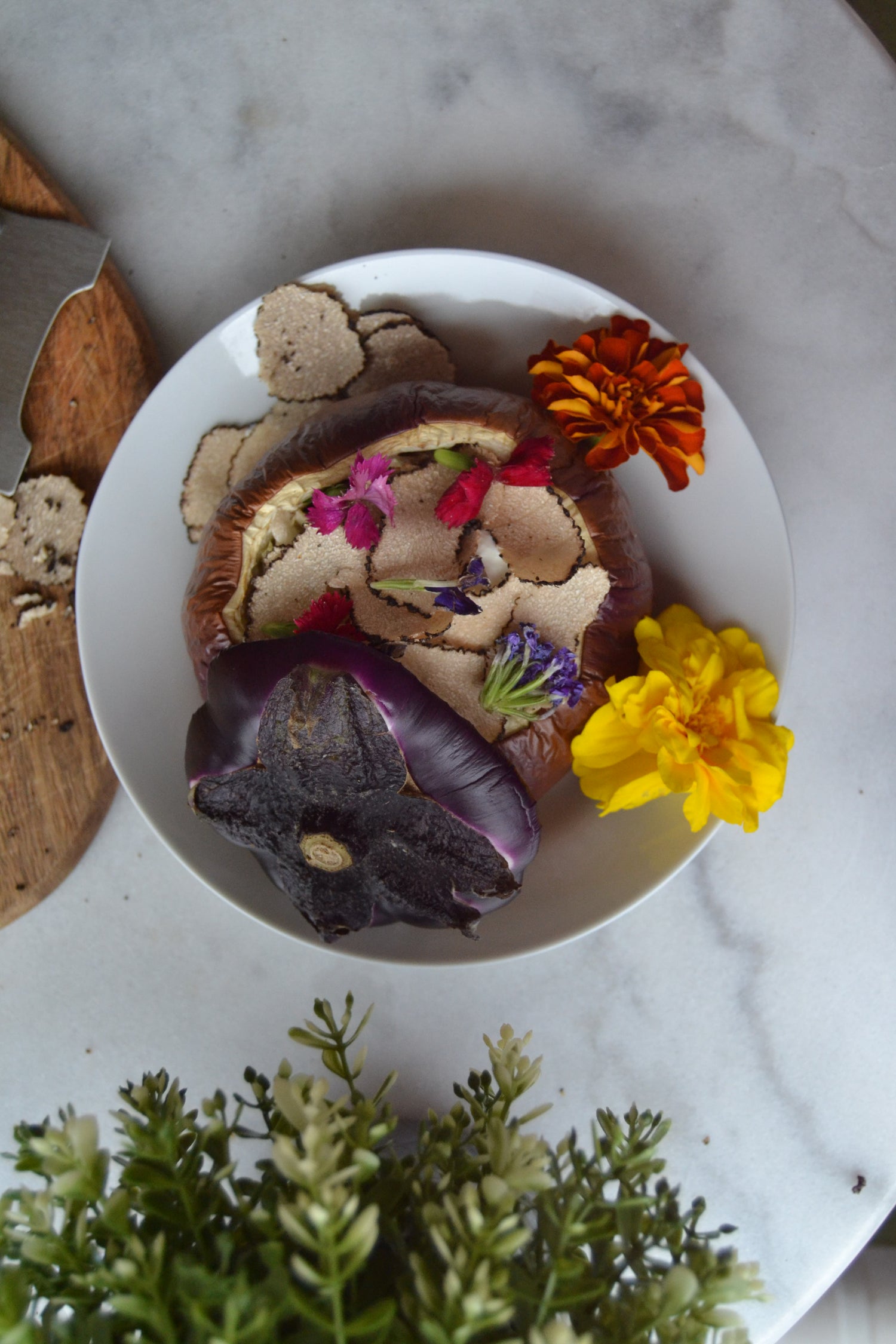
THE SUMMER TRUFFLE IN GASTRONOMY
ENHANCING DELICIOUS SUMMER RECIPES
The summer truffle exudes a particularly attractive scent of forest mushrooms. On the palate, it is reminiscent of delicately buttered hazelnut, but its aromas are very volatile and do not last long. It is therefore advisable to eat the summer truffle raw, simply grated on a small salad of potatoes that are still warm. Its skin being a little thick, the greatest chefs peel it and use the skins of the white summer truffle to make a delicate and ideally flavored puree. It is happily eaten as an aperitif, simply minced on small canapes or cut into thin strips on a small plate, sprinkled with fleur de sel and drizzled with a drizzle of olive oil.
The summer truffle enhances the flavor of an omelette or scrambled egg and adds body to all fish or meat sauces. It can even be used to make a truffled butter or an ice cream with a delicate hazelnut flavor. It is perfect in risottos and pasta in the semi-raw, semi-cooked version. The summer truffle goes wonderfully with creamy poultry or delicious white fish. This is how the Pourcel Brothers serve it, accompanied by an excellent white wine such as Pouilly fumé. Simply infused in a little cream, the Tuber Aestivum diffuses very subtle aromas and fragrances that subtly enhance many dishes. Raw, the white summer truffle retains its crunchiness and intoxicates those who taste it with a more pronounced fragrance. It invites itself as well to the table of the great restaurants as in your kitchen. She is easy to accommodate and self-sufficient. The summer truffle enchants the whole summer period.
The summer truffle , also known as Tuber Aestivum, is a variety of truffle that has long been overlooked. Unique and exceptional, this white truffle is, today, popular with restaurateurs and gourmets while waiting for Tuber Melanosporum. Its light and subtle hazelnut taste will enhance your summer recipes.
COMPLEMENTARY QUESTIONS
What is the difference between summer truffle and winter truffle?
Many differences separate summer truffles from winter truffles. The main distinction is found inside these tubers. Indeed, Tuber Aestivum has a delicate beige flesh, while its sister, Tuber Melanosporum, is distinguished by a deep black gleba. Then, the Saint-Jean truffle exudes a light and subtle mushroom scent, while the black truffle emits powerful aromas reminiscent of the undergrowth. Finally, a significant difference lies in their price, the summer truffle being at a significantly lower price than the prestigious Périgord truffle.
Where to find summer truffles in France?
Particularly fond of humid areas, the summer truffle thrives mainly in the south-east of France, particularly in Provence, in the Carpentras region. Lovers of this delicate truffle can also buy them at their summer truffle market from mid-May to the end of August. However, it is also possible to buy them from truffle selectors with unique know-how such as Maison Henras. Indeed, as truffle experts, we are committed to selecting the best truffles from the best vintages.
What is the price of summer truffles?
The price of summer truffles varies depending on different factors such as temperatures. Indeed, last year Tuber Aestivum reached record prices following the high temperatures of spring. However, having a price significantly lower than the black Périgord truffle, the summer truffle generally has a price of around 200 euros per kilo.
How to taste summer truffles?
Possessing volatile aromas, it is strongly recommended not to cook the summer truffle , but rather to enjoy it in its raw state, delicately cutting it into thin slices in your summer recipes. This recommendation is explained by the fact that cooking alters the unique taste qualities of this tuber. By savoring it raw, you will be able to fully savor its delicate mushroom aroma as well as its pleasant taste of finely buttered hazelnut.
Recipe ideas
Thanks to its delicate and subtle flavor, Tuber Aestivum goes perfectly with various preparations, whether enhancing an omelette or even as an accompaniment to poultry and white fish. The summer truffle is a truffle that stands out for its ability to go extremely easily with all types of dishes, enhancing each of them with its exquisite hazelnut taste.
